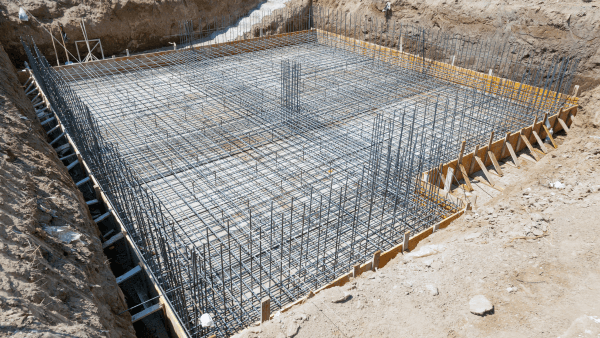Concrete slabs are a fundamental element in modern construction, providing durability, strength, and versatility. Whether you’re planning to build a home, a driveway, or a commercial structure, understanding the role and construction of concrete slabs is essential. This guide will walk you through everything you need to know about concrete slabs, their types, uses, construction methods, and maintenance.
What is a Concrete Slab?
A concrete slab is a flat, horizontal surface made of cast concrete. It is typically used as a foundation for buildings, floors, roofs, or as a standalone surface like a patio or driveway. Concrete slabs can be reinforced with steel bars or mesh to enhance their strength and load-bearing capacity.
Types of Concrete Slabs
- Flat Slab
- Commonly used in multi-story buildings.
- Supported directly by columns without beams.
- Ideal for modern architectural designs.
- Suspended Slab
- Used in high-rise buildings and structures requiring elevated floors.
- Supported by beams, columns, or walls.
- Commonly reinforced for added strength.
- Ground-Bearing Slab
- Constructed directly on the ground.
- Used for flooring in residential and commercial buildings.
- Typically insulated for energy efficiency.
- Precast Slab
- Manufactured off-site and transported to the construction location.
- Used for rapid construction projects.
- Offers consistent quality and durability.
- Hollow Core Slab
- Lightweight due to hollow sections running through it.
- Provides excellent thermal insulation.
- Commonly used in commercial and industrial structures.
Benefits of Concrete Slabs
- Durability: Concrete is a highly durable material, resistant to wear and tear.
- Strength: Provides excellent load-bearing capacity, making it suitable for heavy structures.
- Versatility: Can be customized for various shapes, sizes, and finishes.
- Low Maintenance: Requires minimal upkeep compared to other building materials.
- Energy Efficiency: Concrete slabs with insulation can help regulate indoor temperatures.
Common Applications of Concrete Slabs
- Residential Flooring: Concrete slabs are used in homes for floors, patios, and driveways.
- Commercial Construction: Ideal for warehouses, shopping malls, and office buildings.
- Industrial Use: Suitable for factory floors, storage areas, and heavy machinery setups.
- Infrastructure Projects: Used in bridges, roads, and airport runways.
Construction Process of Concrete Slabs
- Planning and Design
- Determine the type and size of the slab based on its application.
- Consider factors like load requirements, soil conditions, and insulation needs.
- Site Preparation
- Clear the area of vegetation, debris, and other obstacles.
- Level the ground and ensure proper drainage to prevent water accumulation.
- Formwork Installation
- Set up formwork to shape the concrete and hold it in place during pouring.
- Use durable materials like wood, steel, or plastic for the formwork.
- Reinforcement Placement
- Add steel bars or mesh to reinforce the slab and enhance its strength.
- Ensure proper spacing and alignment for optimal performance.
- Concrete Pouring
- Mix and pour concrete into the prepared formwork.
- Use a vibrator to eliminate air pockets and ensure even distribution.
- Finishing
- Smooth the surface using trowels or other tools.
- Add textures or patterns for decorative purposes if needed.
- Curing
- Allow the concrete to cure for at least 7 days to achieve maximum strength.
- Keep the surface moist during curing to prevent cracking.
Maintenance Tips for Concrete Slabs
- Regular Cleaning: Sweep and wash the surface to remove dirt and debris.
- Sealant Application: Apply a concrete sealant to protect against water and chemical damage.
- Crack Repairs: Fix cracks promptly to prevent further deterioration.
- Avoid Heavy Loads: Do not exceed the slab’s load-bearing capacity.
Challenges and Solutions
- Cracking: Prevent by ensuring proper curing and using control joints.
- Moisture Issues: Install a vapor barrier beneath the slab to mitigate.
- Uneven Settling: Address by compacting the soil properly before construction.
Innovations in Concrete Slab Technology
- Self-Healing Concrete: Contains bacteria that activate when water enters a crack, sealing it automatically.
- Lightweight Concrete: Reduces weight without compromising strength.
- Decorative Finishes: Includes stamped, polished, and colored concrete for aesthetic appeal.
Conclusion
Concrete slabs are an indispensable part of modern construction, offering strength, versatility, and durability. Whether you’re a homeowner planning a patio or a contractor working on a commercial project, understanding the basics of concrete slabs can help you achieve better results. By following proper construction methods and maintenance practices, you can ensure the longevity and performance of your concrete slabs for years to come.
